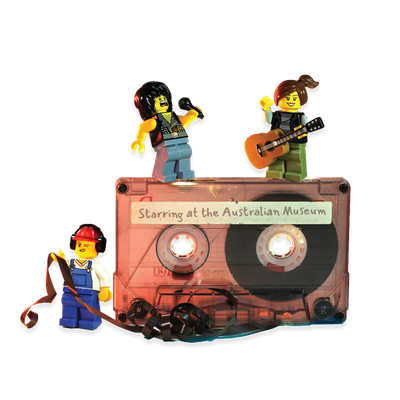Your search returned 17 results
By Page Type
By Tag
- All
- fish (966)
- blog (698)
- fishes of sydney harbour (400)
- First Nations (293)
- Blog (236)
- AMRI (169)
- archives (165)
- Aboriginal and Torres Strait Islander (135)
- Eureka Prizes (131)
- insect (126)
- Ichthyology (125)
- geoscience (109)
- minerals (102)
- climate change (98)
- podcast (94)
- Fish (91)
- Anthropology (89)
- International collections (80)
- Minerals Gallery (78)
- wildlife of sydney (78)
- Labridae (77)
- frog (73)
- gemstone (70)
- history (63)
- photography (63)
- staff (61)
- Mollusca (60)
- gem (59)
- Birds (58)
- education (57)
- Gems (56)
- Indonesia (56)
- AMplify (54)
- shark (54)
- people (53)
- exhibition (51)
- earth sciences (50)
- past exhibitions (50)
- Gobiidae (48)
- Pomacentridae (45)
- sustainability (45)
- Serranidae (44)
- science (43)
- lifelong learning (42)
- Earth and Environmental Science (41)
- Syngnathidae (41)
- Ancient Egypt (40)
- Bali (40)
- bird (40)
- dangerous australians (40)
-
Metamorphism
https://australian.museum/learn/minerals/shaping-earth/metamorphism/The word metamorphism comes from Greek and means 'change of form'. Metamorphic rocks are pre-existing rocks whose mineral composition and/or texture has been changed by processes within the Earth.
-
Magma
https://australian.museum/learn/minerals/shaping-earth/magma/Magma is hot molten mobile rock. Igneous rocks form when magma cools and solidifies. Magmas come out of active volcanoes as lavas.
-
Soils
https://australian.museum/learn/minerals/shaping-earth/soils/Soils are made up of three layers and are thickest where they are older and in warm and wet environments.
-
Volcanic rocks
https://australian.museum/learn/minerals/shaping-earth/volcanic-rocks/Volcanic rocks are divided into three main types: basaltic, volcaniclastic and pyroclastic.
-
Crystallography
https://australian.museum/learn/minerals/what-are-minerals/crystallography/Minerals can be identified by the shape of their crystals: called crystallography. External crystallography measures the outside properties of crystals such as length of crystal surfaces and the angles between these surfaces.
-
Meteors and Meteorites
https://australian.museum/learn/minerals/shaping-earth/meteors-and-meteorites/Solid pieces of extraterrestrial debris (meteoroids) can stray from their orbits in outer space and be captured by Earth's gravity.
-
Classification of sedimentary rocks
https://australian.museum/learn/minerals/shaping-earth/classification-of-sedimentary-rocks/Sedimentary rocks are classified according to the predominant grain size present, as well as by their mineral content.
-
The Sydney Basin
https://australian.museum/learn/minerals/shaping-earth/the-sydney-basin/The Sydney Basin is a major structural basin containing a thick Permian-Triassic (290 Ma - 200 Ma (million years old)) sedimentary sequence that is part of the much larger Sydney-Gunnedah-Bowen Basin.
-
Types of metamorphism
https://australian.museum/learn/minerals/shaping-earth/types-of-metamorphism/There are several different types of metamorphism, including dynamic, contact, regional, and retrogressive metamorphism, that form and shape rocks.
-
Concretions, Thunder Eggs and Geodes
https://australian.museum/learn/minerals/shaping-earth/concretions-thunder-eggs-and-geodes/Concretions are compact, often rounded, accumulations of mineral matter that form inside sedimentary rocks such as shale and sandstone or in soil.
-
Find out more
Tails from the Coasts
Special exhibition
On now![]()
-
Find out more
Burra
Permanent kids learning space
10am - 4.30pm![]()
-
Discover more
RELICS
Special Exhibition
Opens 16 August 2025![]()
-
Discover more
Minerals
Permanent exhibition
Open daily![]()





